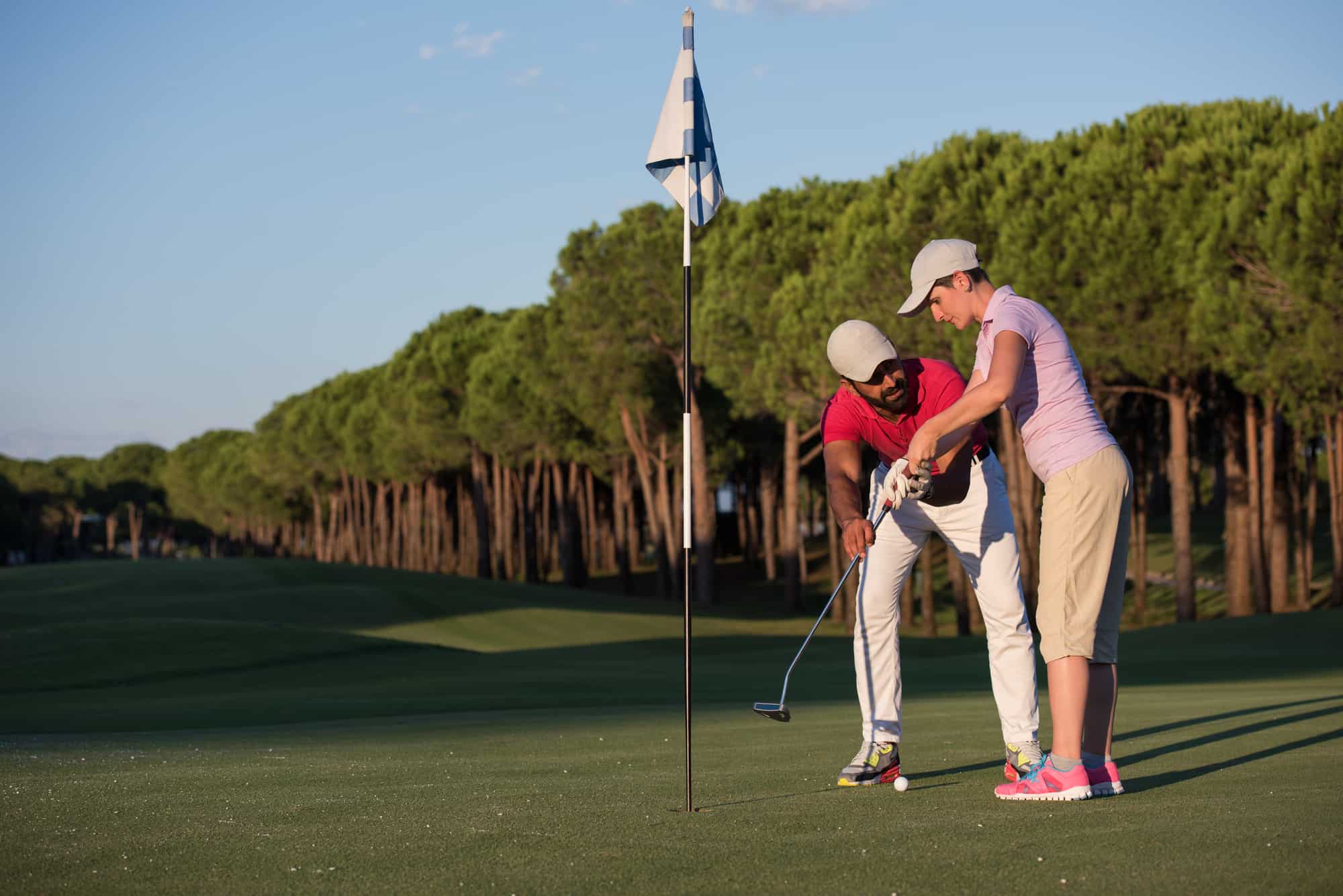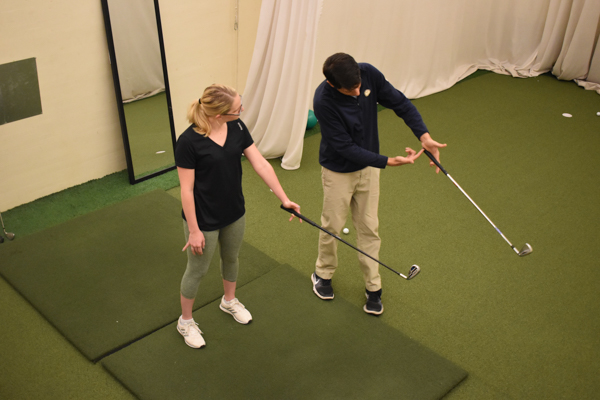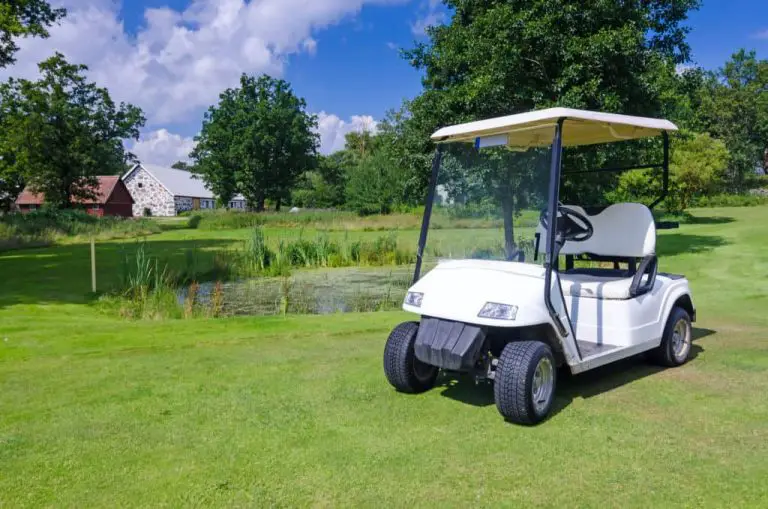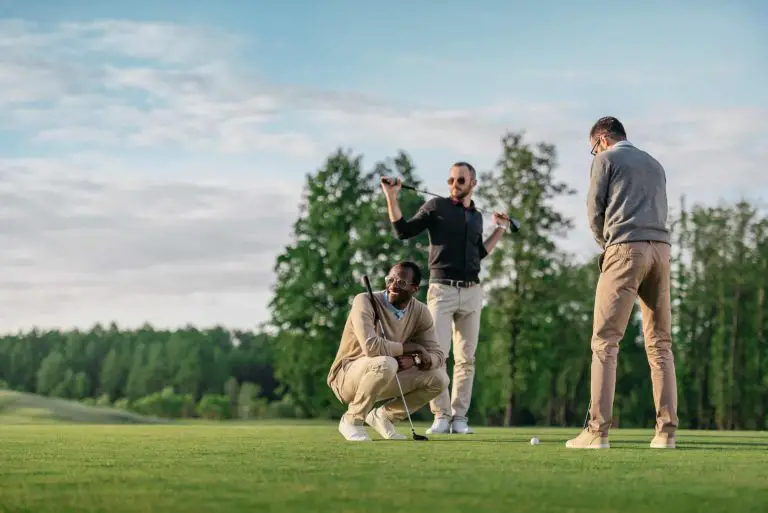What to Wear to a Golf Lesson

Are you ready to improve your golf game and take your skills to the next level? One key aspect that often gets overlooked but can significantly impact your performance is what you wear to a golf lesson. The right attire not only enhances your comfort and freedom of movement but also ensures that you adhere to golf course dress codes. Whether you’re a seasoned golfer or a beginner, dressing appropriately for your lesson is essential.
In this comprehensive guide, we will delve into the world of golf fashion and provide you with valuable insights on what to wear to a golf lesson. We’ll explore various factors such as weather conditions, top and bottom options, footwear, accessories, and dress code considerations. With our practical tips and actionable advice, you’ll be able to make informed decisions when selecting your golf attire.
Discover the perfect balance between style and functionality as we dive into the nuances of golf fashion. From choosing the right materials for different weather conditions to understanding the importance of proper footwear, we’ve got you covered. So, let’s tee off into the world of golf attire and ensure you’re dressed to impress for your next golf lesson!

Determining the Right Golf Attire Based on Weather Conditions
When heading to a golf lesson, it’s crucial to consider the prevailing weather conditions to dress appropriately. Whether it’s a warm, cold, or wet day, your clothing choices should align with the environment to keep you comfortable and focused on your game.
Dressing for Warm Weather
Playing golf on a sunny day can be delightful, but it’s important to protect yourself from excessive heat and sun exposure. Here are some tips for dressing in warm weather:
- Breathable fabrics and moisture-wicking materials: Opt for shirts and shorts made from lightweight, breathable fabrics that allow air circulation and help wick away sweat. Materials like polyester or blends with moisture-wicking technology can keep you cool and dry throughout your golf lesson.
- Lightweight shirts and shorts: Choose shirts with short sleeves or even sleeveless options to allow for maximum airflow. Pair them with comfortable shorts that allow freedom of movement.
- Sun protection: Don’t forget to shield yourself from the sun’s rays. Wear a hat or visor to protect your face, ears, and neck. Consider sporting sunglasses with UV protection to shield your eyes. Apply sunscreen on exposed areas of your skin to prevent sunburn.
Dressing for Cold Weather
Golfing during colder months or in regions with cooler climates requires additional layers to keep you warm and comfortable. Here’s how to dress for cold weather:
- Layering: Layering your clothing is key to adapting to changing temperatures during your golf lesson. Start with a moisture-wicking base layer that helps regulate body temperature. Add an insulating mid-layer, such as a fleece or sweater, to provide warmth. Finally, wear a windproof and water-resistant outer layer to protect against the elements.
- Thermal golf clothing: Invest in thermal golf shirts, pants, and jackets made with insulating materials to trap heat and keep you comfortable during chilly rounds.
- Accessories: Don’t forget to protect your extremities from the cold. Wear gloves to keep your hands warm and maintain a good grip on the club. Consider a beanie or earmuffs to protect your ears and keep your head warm.
Dressing for Wet Weather
Golfing in rainy conditions requires specialized attire to keep you dry and maintain your focus on the game. Follow these guidelines when dressing for wet weather:
- Waterproof and water-resistant clothing: Look for golf-specific jackets and pants that are designed to repel water. These garments often come with sealed seams and waterproof zippers to provide enhanced protection against rain.
- Rain gear: Invest in a high-quality waterproof jacket and pants to shield yourself from the rain. Consider a hat with a wide brim or a rain hat to keep water off your face.
- Waterproof footwear and gloves: Don’t forget to wear waterproof golf shoes or boots to keep your feet dry in wet conditions. Additionally, opt for gloves made from water-resistant materials to maintain a secure grip on the club despite the rain.
Now that we’ve covered dressing based on weather conditions, let’s explore the attributes to consider when selecting specific golf attire pieces for your lesson.
Selecting Appropriate Tops
The top you choose for your golf lesson can significantly impact your comfort and range of motion during your swing. Consider the following attributes when selecting a top:
- Fit: Opt for a shirt that fits well without being too tight or restrictive. A properly fitted shirt allows for a full range of motion, allowing you to execute your swings with ease.
- Material: Look for tops made from moisture-wicking fabrics that help keep sweat away from your skin, promoting evaporation and keeping you cool. Fabrics like polyester or blends with moisture-wicking technology are ideal choices.
- Collar Style: Golf traditionally has a dress code that includes collared shirts for a more polished and professional look. However, some golf courses now allow alternative collar styles such as mock necks or high-performance fabrics that mimic the appearance of a collar.
- Sleeve Length: Consider the weather and choose the appropriate sleeve length. Short sleeves are suitable for warm weather, while long sleeves provide added warmth during colder rounds.
- Color and Pattern: While personal preference plays a role, it’s important to consider any dress code requirements set by the golf course. Opt for colors and patterns that adhere to these guidelines while still reflecting your style.
Now that we’ve covered tops, let’s move on to selecting suitable bottoms for your golf lesson.
Selecting Bottoms for Optimal Performance
The right choice of bottoms can contribute to your overall comfort and flexibility while playing golf. Consider the following attributes when selecting pants or shorts:
- Fit: Choose bottoms that offer a comfortable fit without restricting your movement. Opt for pants or shorts with a relaxed or slightly loose fit to ensure freedom during your swings.
- Length: For warm weather, shorts are a popular choice as they allow for better airflow and cooling. In cooler temperatures, consider wearing pants to provide additional warmth and protection.
- Material: Look for bottoms made from stretchy and moisture-wicking fabrics to allow for ease of movement and to keep you dry throughout your game.
- Golf Skirts or Skorts: Female golfers may prefer golf skirts or skorts, which offer a blend of style and functionality. These garments typically feature built-in shorts for added comfort and coverage.
- Color: Coordinate your bottoms with your chosen top while considering any dress code requirements. Neutral tones or classic colors are generally safe choices.
Now that we’ve covered tops and bottoms, let’s explore the importance of appropriate footwear for your golf lesson.
Footwear for Stability and Support
Having the right footwear is crucial for maintaining stability and support during your golf swings. Consider the following attributes when selecting golf shoes:
- Golf Shoes: Purpose-built golf shoes are designed with features that enhance traction, stability, and support. Choose a pair that fits well and offers the necessary features for your comfort.
- Spikeless Shoes: Spikeless golf shoes have gained popularity as a versatile option suitable for both on-course and off-course wear. They offer comfort, flexibility, and good grip while eliminating the need for replacing spikes.
- Comfort: Look for shoes with cushioning and adequate arch support to provide comfort throughout your lesson. Golf involves significant amounts of walking, so ensuring your footwear keeps you comfortable is essential.
- Waterproofing: Consider investing in waterproof golf shoes, especially if you frequently play in wet or damp conditions. Keeping your feet dry can contribute to your overall comfort and focus during your game.
Now that we’ve covered footwear, let’s move on to accessories that can enhance your golf attire.
Accessories for Added Functionality
Accessorizing your golf attire can provide additional functionality and style to your overall look. Consider the following accessories for your golf lesson:
- Headwear: Wear a cap, visor, or hat to protect your face and eyes from the sun. Not only does it offer sun protection, but it can also help you maintain focus by reducing glare.
- Sunglasses: Opt for sunglasses with polarized lenses to reduce glare and enhance visibility. Choose a pair that offers UV protection to safeguard your eyes from the sun’s harmful rays.
- Gloves: Golf gloves offer several benefits, including a better grip on the club, reduced risk of blisters, and added comfort. Invest in a high-quality glove that fits well and complements your overall attire.
- Belts: A functional and stylish belt can add a touch of sophistication to your golf outfit. Choose a belt that coordinates with your attire and provides a secure fit.
- Socks: Select moisture-wicking and cushioned socks to keep your feet comfortable and prevent blisters. Good-quality socks can enhance your overall golfing experience.
- Wristbands or Sweatbands: Wearing wristbands or sweatbands can help absorb sweat from your forehead and wrists, keeping your hands dry and your focus sharp.
Now that we’ve covered accessories, let’s discuss the importance of adhering to golf course dress codes.
Dressing Appropriately Based on Golf Course Dress Code
Different golf courses may have specific dress code policies that golfers must adhere to. Before heading to your lesson, familiarize yourself with the dress code requirements of the golf course you will be visiting. Here are some general guidelines to consider:
- Checking Dress Code Policies: Visit the golf course’s website or contact them directly to understand their dress code policies. Some courses may have specific rules regarding collared shirts, shorts length, or prohibited clothing items.
- Avoiding Denim, Athletic Shorts, or T-shirts: In most cases, denim, athletic shorts, or t-shirts are not considered appropriate golf attire. Choose more traditional and golf-specific clothing items that adhere to the dress code.
- Wearing Collared Shirts or Appropriate Alternatives: Many golf courses require men to wear collared shirts. If you prefer a collarless option, consider high-performance fabrics designed specifically for golf that offer a collar-like appearance.
- Opting for Tailored Pants or Knee-length Shorts: Depending on the dress code, tailored pants or knee-length shorts may be required. Avoid excessively baggy or revealing clothing, and ensure your attire presents a neat and respectful appearance.
In conclusion, selecting the right attire for your golf lesson plays a crucial role in your overall performance, comfort, and adherence to golf course dress codes. By considering the weather conditions, choosing appropriate tops and bottoms, selecting suitable footwear, accessorizing thoughtfully, and following dress code guidelines, you’ll be well-prepared to make the most of your golf lesson. So, dress the part, feel confident, and enjoy the game!




